“In Brightest Day, in Blackest Night. No evil shall escape my sight.” The Green Lantern, the protector of Space Sector 2814, has said that oath for decades. As a character, Green Lantern has been a mainstay of DC Comics since 1940, with many different heroes wielding the emerald Power Ring. Soon, DC Studios will tackle a Green Lantern TV series for HBO, simply called Lanterns. So now is the perfect time to take a deep dive into the many decades of Green Lantern comics from DC. And to help you choose, we present to you the ten greatest Green Lantern comic book runs of all time.
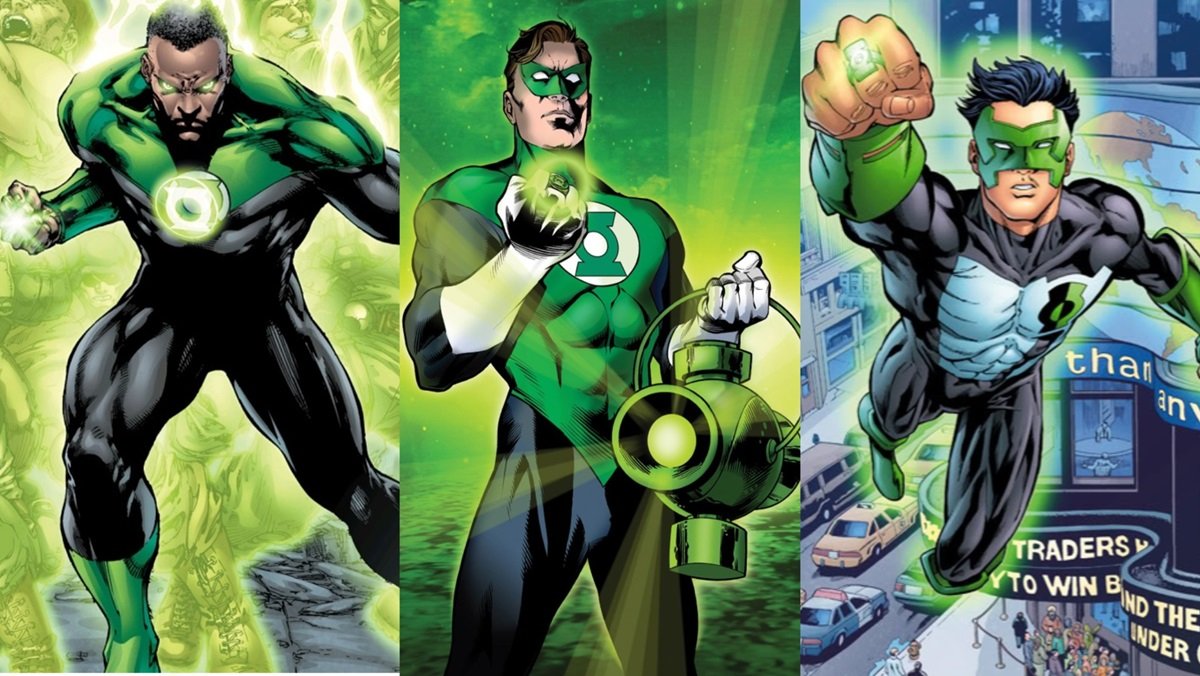
10. The Green Lantern
by Grant Morrison and Liam Sharp
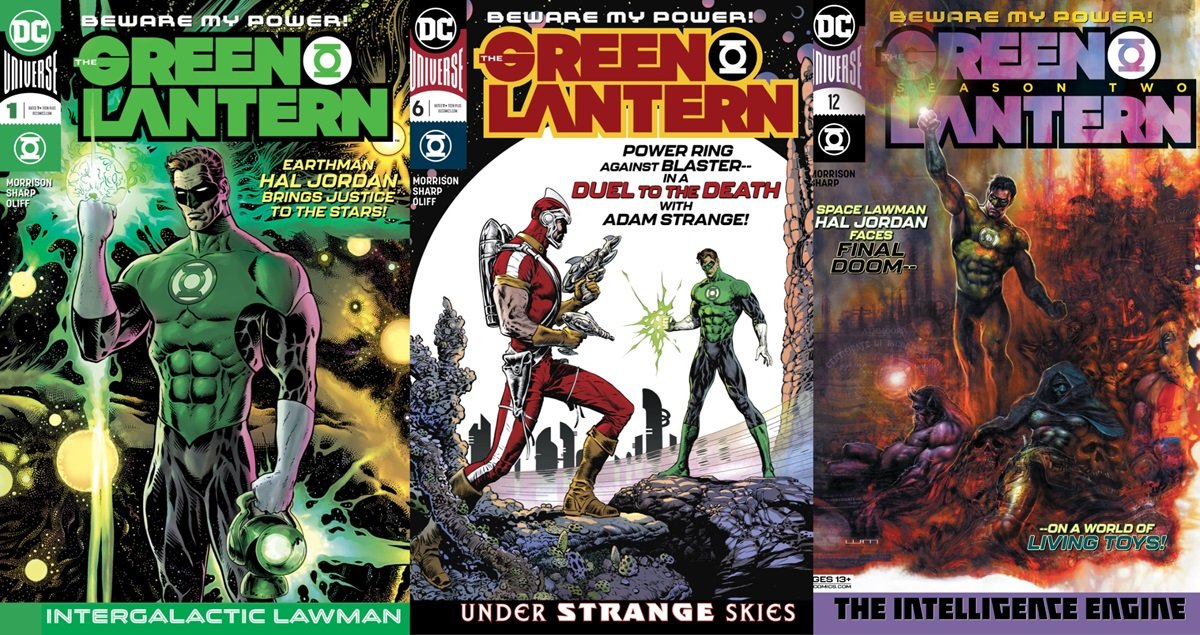
Grant Morrison is one of the greatest writers in modern comic book history, having written definitive runs for DC’s Superman, Batman, Justice League, and Wonder Woman. While we can’t say their Green Lantern run is a truly definitive run for the character, it definitely contained many interesting moments. In 2018, Morrison took on Green Lantern Hal Jordan, for a new ongoing series simply called The Green Lantern. The intricately detailed artwork for almost the entire run was provided by UK artist Liam Sharp, doing some career-best work.
Morrison, in their usual way, wanted to get weird with it. They focused more on Hal Jordan than the cast of thousands of the previous few years of GL mythos. In Morrison’s portrayal, Hal Jordan is an ordinary guy, just one whose mind expanded after years of experiencing cosmic incidents, death, and rebirth. Not everything lands in this run, as sometimes Morrison gets too esoteric for their own good for a Green Lantern title. But some of the ideas, and especially Sharp’s artwork, make this one to check out if you love Green Lantern.
Issues in Grant Morrison’s Green Lantern Run:
The Green Lantern #1-18, Blackstars #1-3 (2018-2021)
9. Green Lantern War Journal
by Phillip Kennedy Johnson and Montos
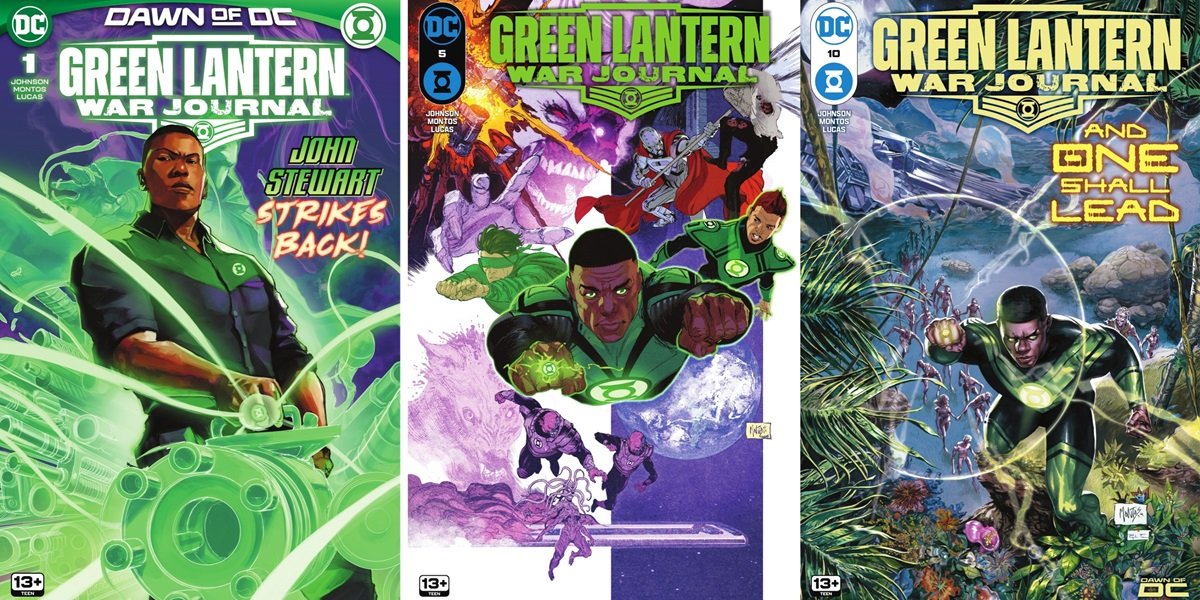
Even though he’s DC’s first African American superhero, there are too few instances where John Stewart headlined a solo Green Lantern title. The first time was the short-lived, yet weird and brilliant Green Lantern: Mosaic back in 1992. But in 2023, DC gave John another shot at a solo ongoing title, in the excellent Green Lantern: War Journal series. This book comes from the creative team of writer Phillip Kennedy Johnson, and artist Montos.
This series featured John Stewart attempting a quiet life on Earth, hoping to retire from the hero car. But soon, John is forced to wear the Power Ring once more when a deadly mystery emerges. This series reconciles the contradicting versions of the character. Was he the idealistic architect from the ‘70s, or the hard-nosed Marine from the 2000s era Justice League cartoons? Well, why not both? Sadly, this book is ending after just 12 issues this year. Yet the 11 issues we did get so far were pretty fantastic and worth your time.
Issues in Phillip Kennedy Johnson and Montos’ Green Lantern War Journal Run:
Green Lantern War Journal #1-12 (2023-2024)
8. Green Lantern Corps (vol. 1)
by Steve Englehart and Joe Staton
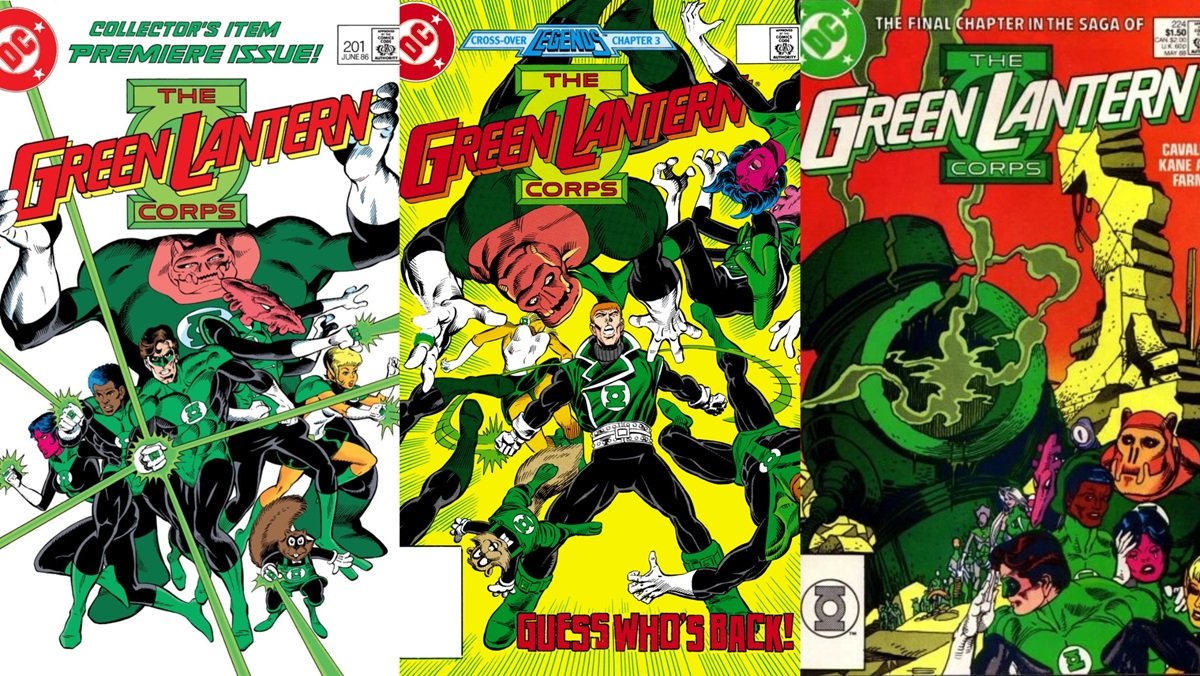
In the early ‘80s, Green Lantern comics were stuck in a rut. Hal had left Green Arrow behind and became a solo act after a decade. Yet aside from the back-up Tales of the Green Lantern Corps from a young Alan Moore, nothing about Green Lantern as a comic was very exciting anymore. DC decided to retire Hal and replace him with John Stewart for an extended period, and later Guy Gardner. But even that didn’t increase sales significantly. So with the events of Crisis on Infinite Earths, DC decided to change things up big time. Green Lantern would become a superhero team book.
With issue #201, Green Lantern became Green Lantern Corps. On writing duties was Avengers and Batman veteran Steve Englehart, with stylized art by Joe Staton. After the events of Crisis, the Guardians departed this reality, leaving their Corps members to chart their own destinies, abolishing space sectors. A group of Lanterns led by Hal Jordan became a team, including John Stewart, his alien wife Katma Tui, Guy Garnder, the alien chipmunk GL named Ch’p, and a brand new Lantern named Kilowog, who would become a fan-favorite. This run proved the GLC as a team book could work, even if the series only lasted 24 issues. For some reason, this series isn’t collected today, an oversight DC should correct right away.
Issues in Steve Englehart and Joe Staton’s Green Lantern Corps Run:
Green Lantern Corps vol. 1 #201-224 (1986-1988)
7. Far Sector
by N.K. Jemisin and Jamal Campbell
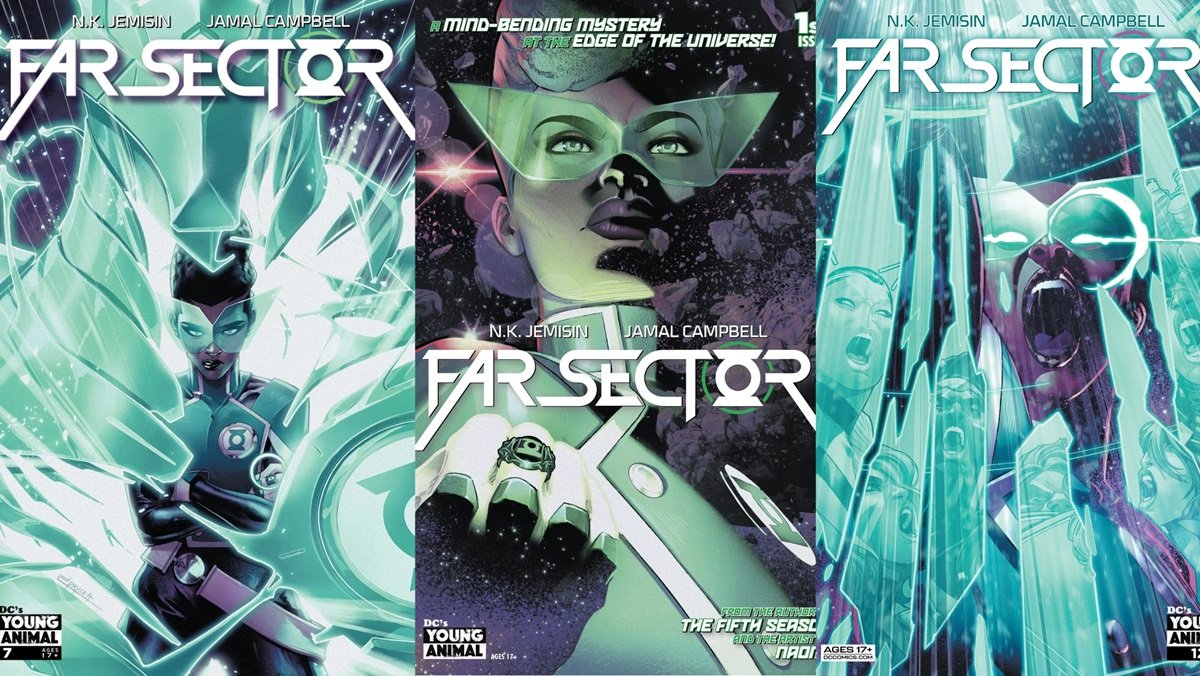
This limited series was written by sci-fi author N.K. Jemisin, and illustrated by Jamal Campbell. It focused on an entirely brand new hero, the Green Lantern Sojourner “Jo” Mullein. And yes, she’s another Green Lantern from Earth (really, that’s like ten Earth Lanterns now. Enough DC!) A former military officer and ex-cop, Jo has been recruited by the Guardians of the Universe to keep the peace on a planet in the furthest known reaches of known space. She even uses a special Power Ring that slowly recharges on its own instead of needing to recharge with a battery.
The story of Far Sector starts as Jo Mullein becomes a cosmic detective, investigating the first murder victim in 500 years on a distant world. Unlike most G.L. stories, Far Sector actually remembers that the Green Lantern Corps aren’t really space soldiers, they’re actually space police. And in space and on Earth, policing, and what it means to those with no power, creates complications. This is a relatively recent series, released in 2020. But it’s a fantastic standalone story that deserves a lot more attention. Thankfully, Sojourner “Jo” Mullein has since been incorporated into the larger DC Universe.
Issues in N.K. Jemisin and Jamal Campbell’s Far Sector Run:
Far Sector #1-12, 2020-2022
6. Green Lantern: Emerald Dawn
by James Owsley, Keith Giffen, Gerard Jones, and M.D. Bright
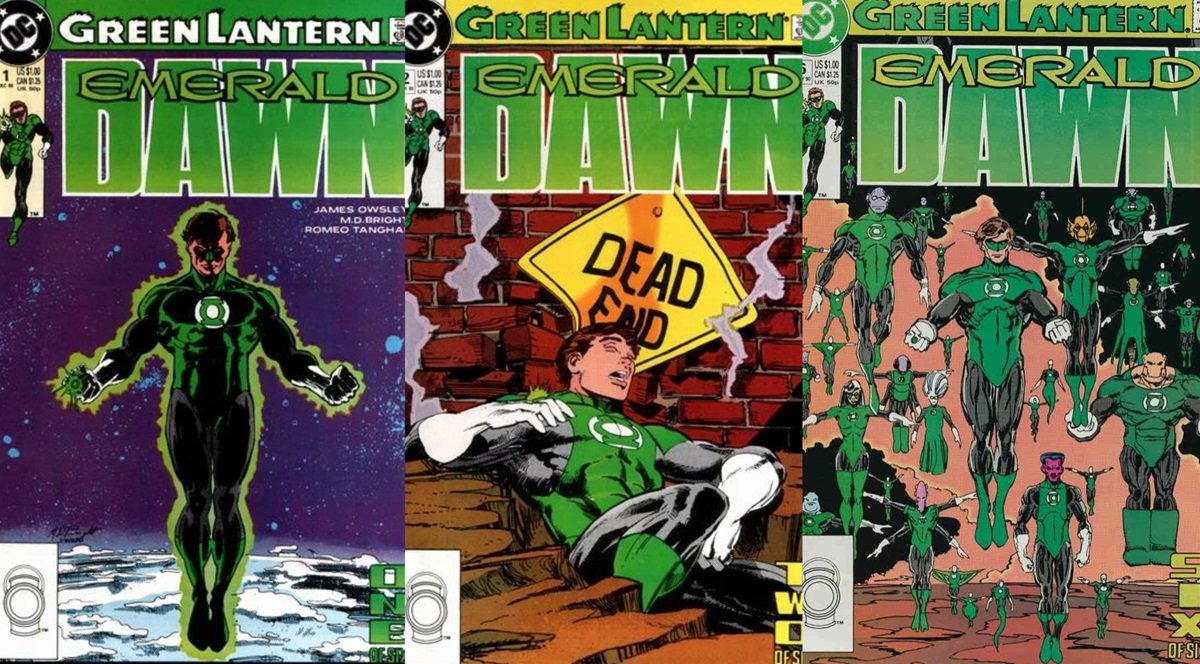
After the end of the Green Lantern Corps, there were only two Green Lanterns on Earth again—Hal Jordan and Guy Gardner. Guy was in the popular Justice League International series, but Hal Jordan, the OG, was without a home. So in 1989, DC decided to give Hal Jordan’s origin story a modern, post-Crisis update, with the limited series Green Lantern: Emerald Dawn. It was a testing ground to see if Hal was popular enough to headline an ongoing series again. The book, by writers James Owsley, Keith Giffen, and Gerard Jones, with art by M.D. Bright, was an instant hit, spawning an immediate sequel, and eventually a new ongoing series.
This six-issue mini-series added important new elements to Hal’s backstory, like the fact that he wasn’t all that perfect and upstanding before becoming a Lantern anymore, struggling with many personal issues before Abin Sur’s Power Ring chose him. These problems included prison time for a car accident that he caused while under the influence. Emerald Dawn also introduced the idea that future arch-villain Sinestro was Hal’s trainer as a GL, something that remains a facet of his story to this day. The art by the late M.D. Bright is the right mix of modern and classic, making this still a fun read today.
We should note that one of the three writers on Emerald Dawn, Gerard Jones, is a convicted criminal charged with fairly horrible crimes, which is likely why the series has remained out of print.
Issues in Keith Giffen, James Owsley, Gerard Jones, and M.D. Bright’s Green Lantern: Emerald Dawn Run:
Green Lantern: Emerald Dawn #1-6 (1989-1990), Green Lantern: Emerald Dawn II (1991)
5. Green Lantern (vol. 2)
by John Broome, Gardner Fox, and Gil Kane
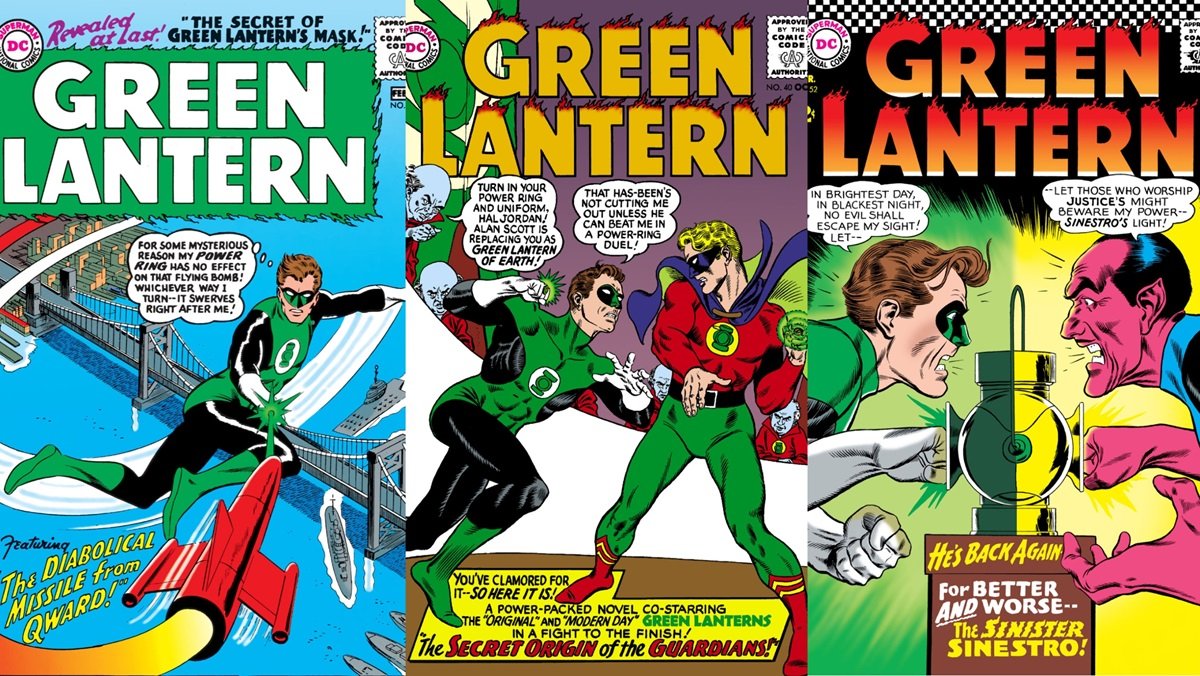
The foundation for everything we know and love about the Green Lantern mythology is firmly rooted in the Silver Age stories of writers John Broome, Gardner Fox, and artist Gil Kane. Yes, a Golden Age Green Lantern existed before during WWII, Alan Scott. Yet it was these 1960s stories that defined who and what Green Lantern really is as a concept for the rest of time. In 1959’s anthology title Showcase #22, they took the name Green Lantern and built a whole new sci-fi mythology around it. With a new lead hero, Hal Jordan, rooted in the Atomic Age space race of the day, Green Lantern as a series was much better on the second try.
During this iconic Silver Age Green Lantern run, they not only introduced Hal Jordan. They also introduced the entire Green Lantern Corps, the Guardians of the Universe, Sinestro, and so many other concepts that remain to this day. Yes, the characterizations of the characters are often bland and one-note. There’s an undeniable goofiness to it all. That was just the era. Not to mention, Hal’s adventures and adversaries are way too Earth-bound during this time. But the imaginative storytelling and Gil Kane art will win you over. Even if it would take a later generation of writers to truly make Green Lantern great.
Issues in John Broome, Gardner Fox, and Gil Kane’s Green Lantern Run:
Showcase #22-24, Green Lantern vol. 2 #1-60 (1959-1960)
4. Green Lantern Corps
by Peter J. Tomasi and Patrick Gleason
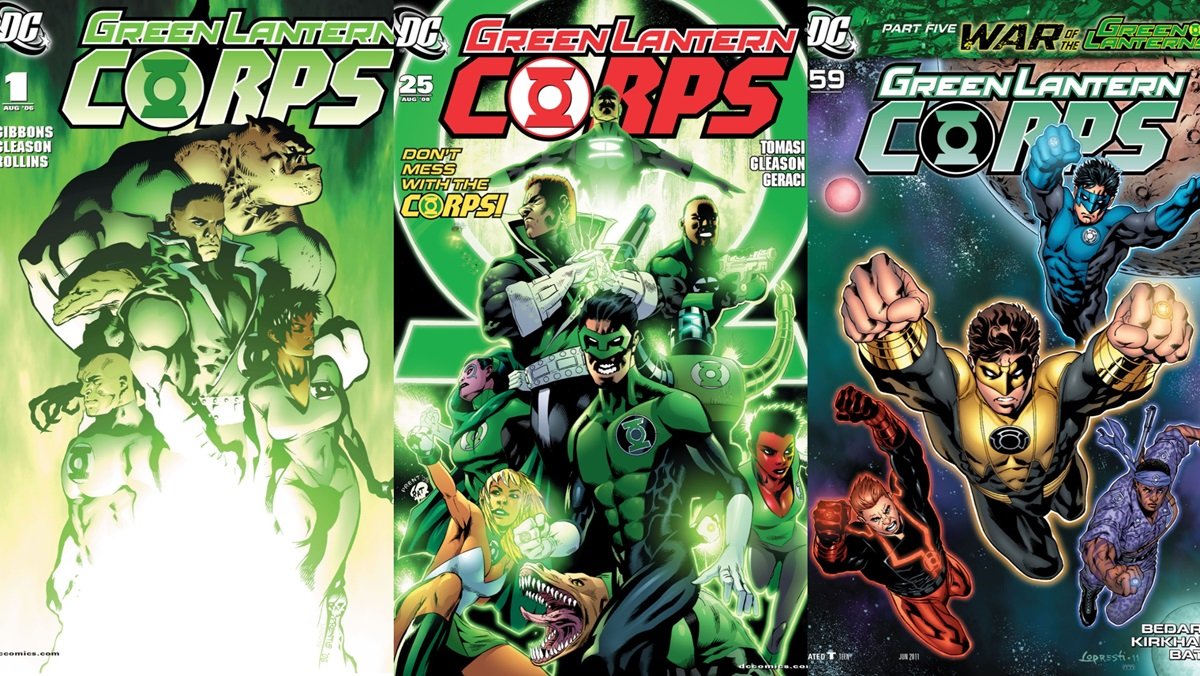
Everyone cites Geoff Johns’ epic run on Green Lantern as peak superhero storytelling. As well they should. But during the Johns era, the companion Green Lantern Corps ongoing series from writer Peter J. Tomasi and artist Patrick Gleason was often just as good—sometimes even better—than the flagship book. After the successful Green Lantern Corps: Recharge mini-series, DC took a chance on an ongoing GLC series again. This series almost totally takes place in space, with Honor Guard Lanterns John Stewart, Guy Gardner, Kyle Rayner, and others taking center stage.
In addition to the Earth Lanterns, exciting new characters like Sinestro’s replacement GL, Soranik Natu, were introduced in this series. When Green Lantern Corps was read simultaneously with Johns’ main Green Lantern title, it all felt like one epically large cosmic story when read together. Although Watchmen artist Dave Gibbons wrote the first couple of arcs, Peter J. Tomasi takes over for most of the rest of the run. Throughout all of this, you get the gorgeous artwork of Patrick Gleason. That alone makes this run an all-timer.
Issues in Peter J. Tomasi and Patrick Gleason’s Green Lantern Corps Run:
Green Lantern Corps vol. 2 #1-47 (2006-2010),
3. Green Lantern/Green Arrow
by Denny O’Neil and Neal Adams
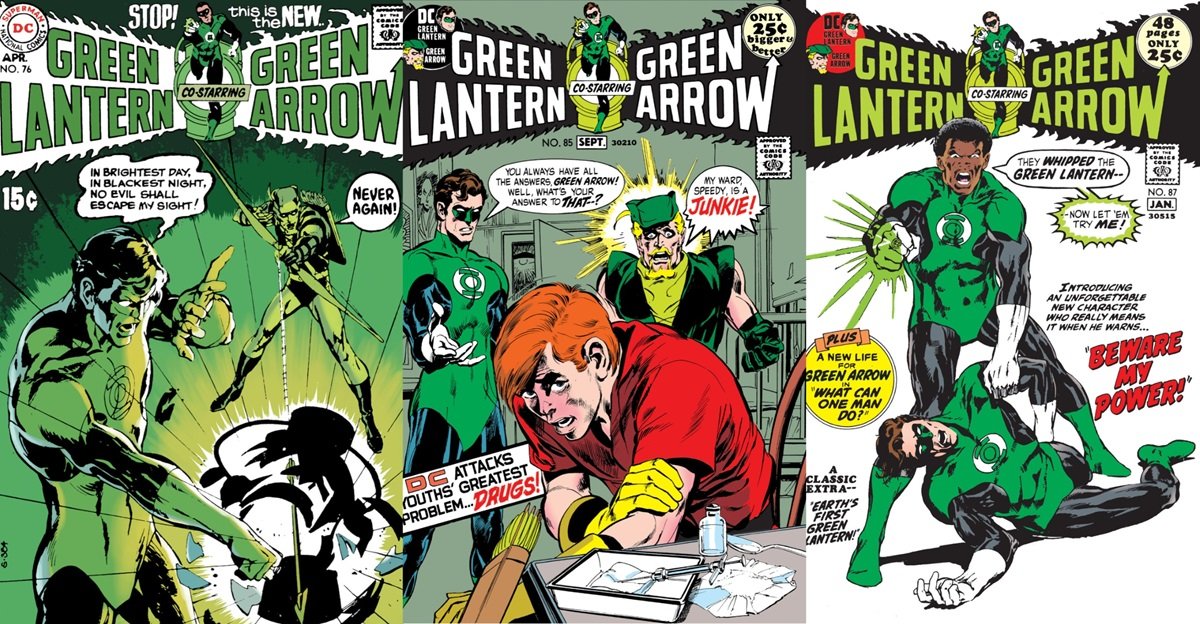
By the end of the Silver Age, American comics were changing. More college kids than elementary school children were reading them. The stories themselves started to deal with more mature subjects and complex characterizations—especially at DC’s rival Marvel Comics. So in 1970, DC tasked young writer/artist duo Dennis O’Neil and Neil Adams, who also reinvented Batman, with reinventing Green Lantern as a socially relevant series. And they brought on Green Arrow as a co-lead, creating one of the comics’ best bromances. Green Lantern officially changed to Green Lantern/Green Arrow with issue #76.
During O’Neil and Adams’ “Hard Travellin’ Heroes” run, Hal Jordan represented conservative, establishment America. Oliver Queen’s Green Arrow was recreated as an almost hippy, hyper-leftist superhero. The two were oil and water, and they traveled America facing the issues of the day, like racism and drug abuse. Even Manson-like cults! Sometimes the writing was a bit preachy and on the nose, but the artwork and dynamic storytelling from O’Neil and Adams always sold it. This run saw the introduction of John Stewart, another reason it’s a milestone series. Hal and Ollie would remain partners for the entire ‘70s. Yet it was the O’Neil/Adams run that is the gold standard, even still.
Issues in Denny O’Neil and Neal Adams’ Green Lantern/Green Arrow Run:
Green Lantern/Green Arrow #76-89 (1970-1972)
2. Green Lantern (Vol. 3)
by Ron Marz and Daryl Banks, Paul Pelletier
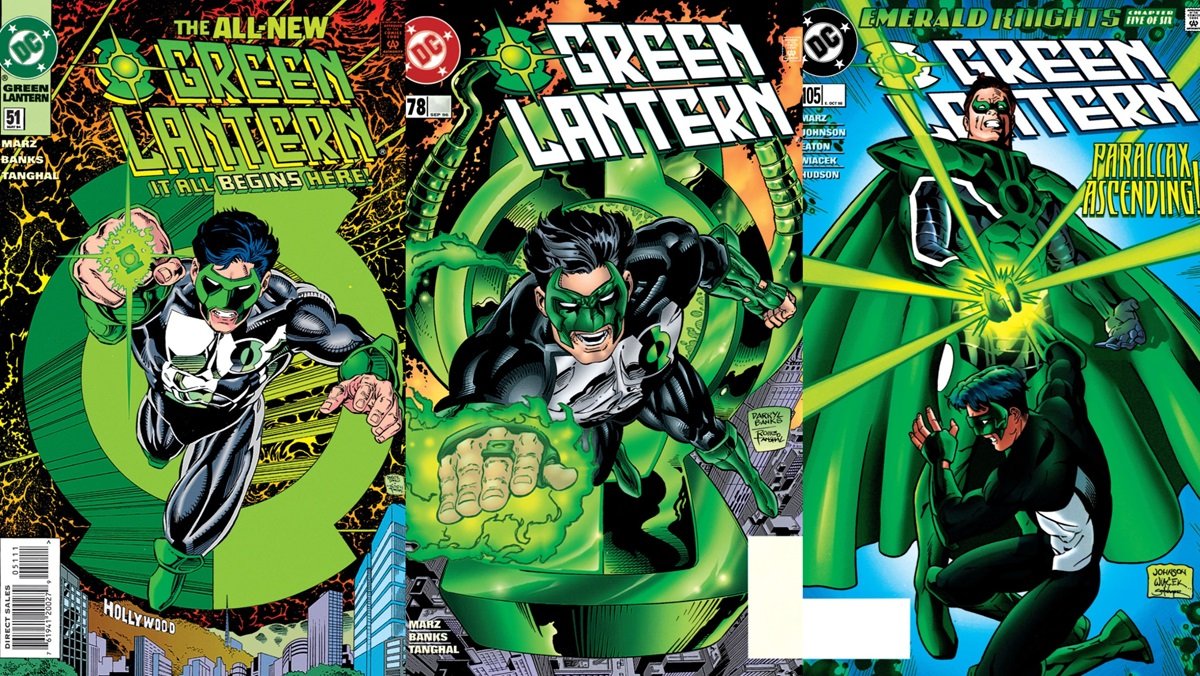
In 1994, the comic book industry took a giant hit when the so-called comic book crash happened. Sales on once-popular franchises like Green Lantern, which a couple of years prior had three titles and a quarterly, were in freefall. So DC gambled. As a result of events during their Death and Return of Superman storyline, Hal Jordan lost his marbles, killed what remained of the GL Corps, and became the villain Parallax. All in the mere span of 3 issues. Only one power ring remained, and it went to a twenty-something slacker in a Nine Inch Nails t-shirt. And with that, Green Lantern was reborn.
In 1994’s Green Lantern #50, the last Guardian of the Universe gave out-of-work artist Kyle Rayner the last Power Ring, and he shaped himself into the universe’s last Green Lantern. A total 180 from Hal Jordan, Kyle was more like the readers—young, relatable, and more interested in art than airplanes. Ron Marz took on writing chores with Daryl Banks on pencils, and together they created a hero for the ‘90s that remains a fan favorite. Kyle had Spider-Man levels of average-guy superhero soap opera, all while trying to live up to a legendary legacy. Marz wrote the first issues, during much of which Green Lantern was once again a backbone of DC’s publishing line. Hal returned a decade later, but Kyle’s run as GL is undeniable.
Issues in Ron Marz’s Green Lantern Run:
Green Lantern vol. 3 #48-125 (1994-2000)
1. Green Lantern (vol. 4, vol. 5)
by Geoff Johns, Ivan Reis, Ethan Van Sciver, Doug Mahnke
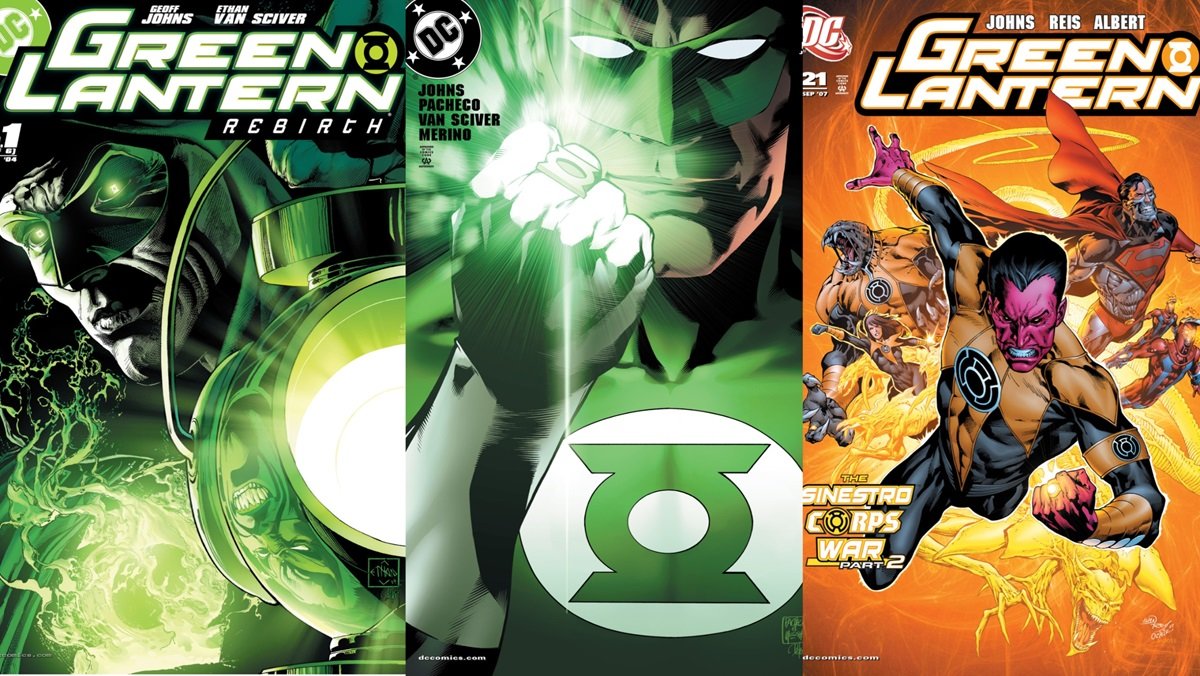
When it comes to Green Lantern comic book runs, few would argue that writer Geoff Johns‘ nearly ten-year run on the title is the GOAT. When Johns came on board for GL in 2004, the character was in a downturn. Kyle Rayner was still the main Lantern, but the series had lost steam after a decade. Especially without Rayner’s creator Ron Marz at the helm. Hal Jordan had gone from villain to dead to the ghostly hero the Spectre. The Corps was disbanded. It was a bit of a broken franchise. Writer Geoff Johns fixed all that almost overnight, starting with the blockbuster mini-series Green Lantern: Rebirth.
In Green Lantern: Rebirth, Johns and artist Ethan Van Sciver re-energized the series by bringing Hal Jordan back from the dead, as well as his main rival Sinestro. They also created a plausible explanation for Hal’s turn to the dark side a decade earlier, creating the fear entity Parallax, which we learned possessed Hal. During the Johns run, alongside artists like Ivan Reis and Doug Mahnke, they expanded the Green Lantern mythology like no ever had before. Together, they created some of the best ongoing superhero yarn-spinning of the last few decades.
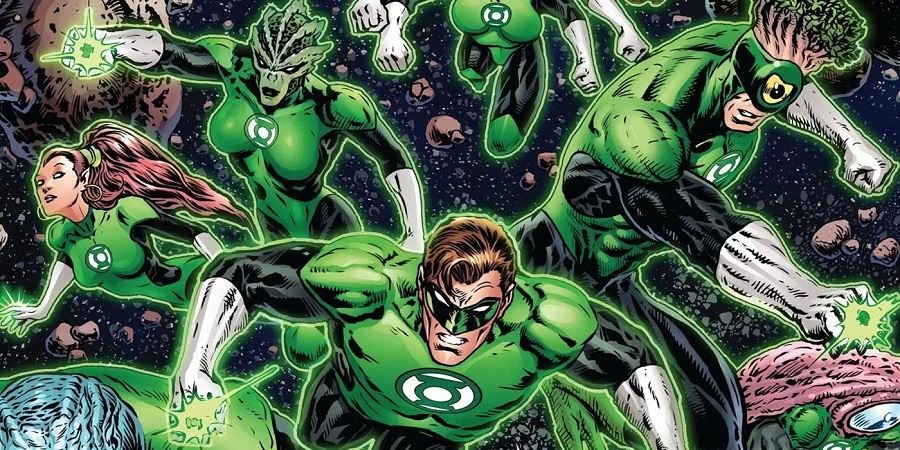
During his tenure, Johns created the Sinestro Corps, introduced the concepts of the Emotional Spectrum, the other colored Lantern Corps, like the rage-fueled Red Lanterns, the Third Army, and maybe the peak of the franchise, Blackest Night. This mini-series introduced the zombie-like Black Lantern Corps, made up of the animated corpses of dead DC characters. Geoff Johns’ run on Green Lantern was so epic, that no writer since has ever been able to top it. For a brief time, Geoff Johns turned Green Lantern into DC’s second-biggest franchise after Batman. And it will be a long time before its light goes out in the hearts of fandom.
Issues in Geoff Johns’ Green Lantern Run:
Green Lantern: Rebirth #1–6 (2004–2005), Green Lantern vol. 4 #1–67 (2005–2011) Green Lantern vol. 5 #0–20 (2011–2013) Blackest Night #0-9 (2009-2010)